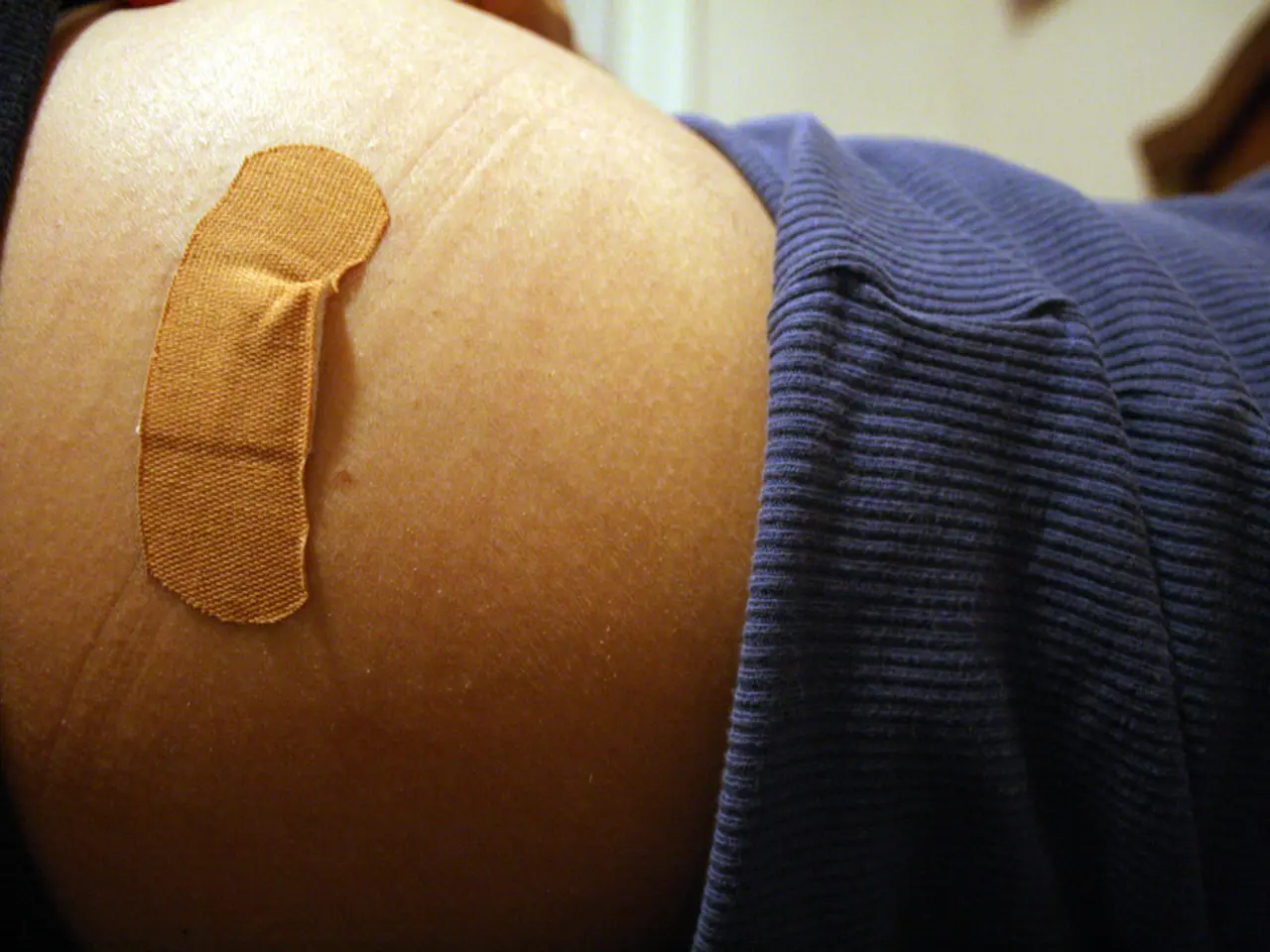Abscess on Skin: Images, Signs, Origins, and Remedies
Skin abscesses are a common health concern that can affect anyone, although certain groups, such as people with obesity, diabetes, compromised immune systems, smokers, and intravenous drug users, are at a higher risk. These lesions typically appear as firm, round bumps that are painful, swollen, red or pinkish purple, warm to touch, and may have a punctum at the centre.
The most common cause of skin abscesses is bacterial infection, with Staphylococcus aureus, Streptococcus pyogenes, and Mycobacterium tuberculosis being among the bacteria that can cause these infections. However, less common causes include anaerobic organisms, fungal infections, viruses, and parasites.
If left untreated, skin abscesses can lead to several serious complications. The spread of infection to surrounding tissues can potentially cause tissue death and gangrene due to spreading pus. In severe cases, sepsis – a life-threatening systemic infection – may occur when bacteria enter the bloodstream. Pressure on vital organs, particularly if the abscess forms near critical areas, can also be fatal.
Fistula formation, especially common with abscesses near the anus or rectum, is another potential complication. A tunnel forms between the infected gland and skin, potentially causing recurrent infections, pain, discharge, and obstruction. Recurrent abscesses, especially if fistulas form or if the bacteria are resistant (such as MRSA), increase the difficulty of treatment.
Deep infections, including deep tissue infections, and, in dental abscess cases, extension to deep neck spaces, also pose a significant risk. These complications underscore the importance of timely medical diagnosis and treatment, which may involve drainage, antibiotics, and wound care to prevent abscess progression and systemic infection.
Treatment for a skin abscess typically involves draining the fluid by making an incision, administering local anaesthetic, flushing the cavity with a saline solution, and leaving the abscess open to drain. In some cases, a wick may be inserted to help it drain. After medical drainage, at-home care includes slowly removing packed gauze from inside the wound, and using moist, warm compresses to encourage wound drainage and prevent the abscess from forming again.
To help prevent more abscesses from forming in the future, maintaining good personal hygiene, avoiding shared equipment and items, disposing of bandages and tissues properly, shaving carefully, following a nutritious diet, quitting smoking if applicable, and maintaining a moderate weight are all recommended. If someone suspects they have an infected abscess, they should seek medical attention immediately. Attempting to drain an abscess at home can lead to complications and should be avoided.
- Diabetes, obesity, and compromised immune systems can increase an individual's risk of developing skin abscesses.
- Macular degeneration, dry AQ, and depression have not been identified as common causes of skin abscesses, according to science.
- Skin-care routines should include careful shaving to potentially reduce the risk of skin abscesses.
- Type 2 diabetes, COPD, and intravenous drug usage raise the likelihood of experiencing skin abscesses.
- Dark spots on the skin, known as lake yellow, are not indicative of skin abscesses.
- Certain therapies and treatments, such as predictive analytics, have the potential to reduce the occurrence of accidental falls and subsequent skin abscesses.
- Topical steroid use in treating atopic dermatitis should be done carefully, as it may heighten the risk of bacterial skin infections like abscesses.
- Obesity-related conditions, like type of obesity and hypertension, have not been definitively linked to the development of skin abscesses.
- Adherence to health-and-wellness practices, including a nutritious diet and regular exercise, may help reduce the risk of skin abscesses.




